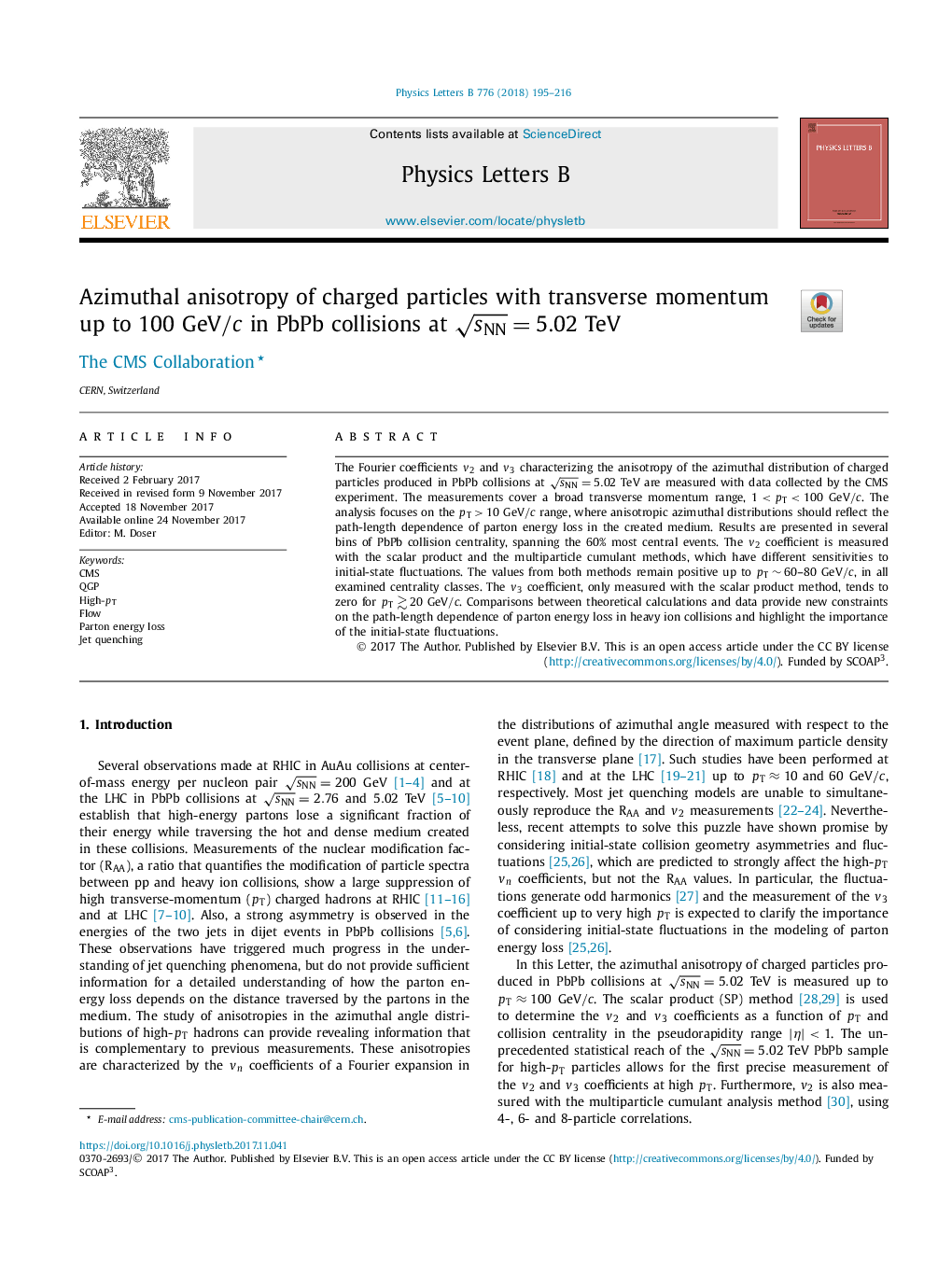| Article ID | Journal | Published Year | Pages | File Type |
|---|---|---|---|---|
| 8187040 | Physics Letters B | 2018 | 22 Pages |
Abstract
The Fourier coefficients v2 and v3 characterizing the anisotropy of the azimuthal distribution of charged particles produced in PbPb collisions at sNN=5.02TeV are measured with data collected by the CMS experiment. The measurements cover a broad transverse momentum range, 110GeV/c range, where anisotropic azimuthal distributions should reflect the path-length dependence of parton energy loss in the created medium. Results are presented in several bins of PbPb collision centrality, spanning the 60% most central events. The v2 coefficient is measured with the scalar product and the multiparticle cumulant methods, which have different sensitivities to initial-state fluctuations. The values from both methods remain positive up to pTâ¼60-80GeV/c, in all examined centrality classes. The v3 coefficient, only measured with the scalar product method, tends to zero for pTâ³20GeV/c. Comparisons between theoretical calculations and data provide new constraints on the path-length dependence of parton energy loss in heavy ion collisions and highlight the importance of the initial-state fluctuations.
Related Topics
Physical Sciences and Engineering
Physics and Astronomy
Nuclear and High Energy Physics
